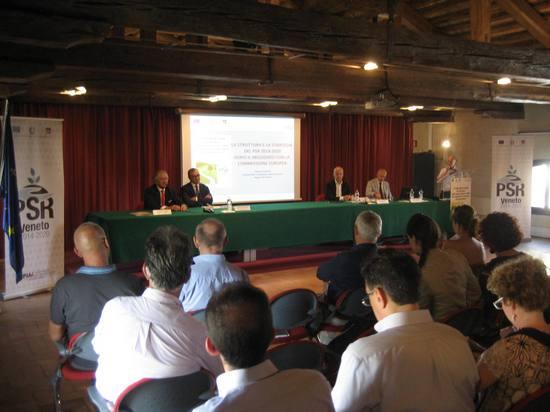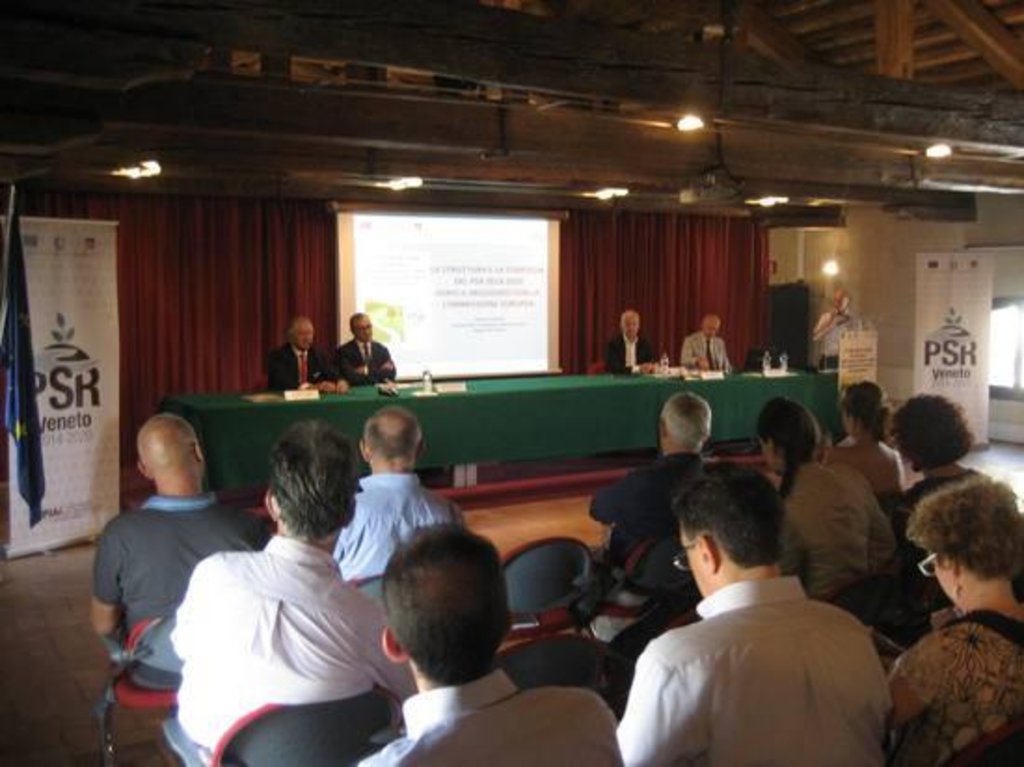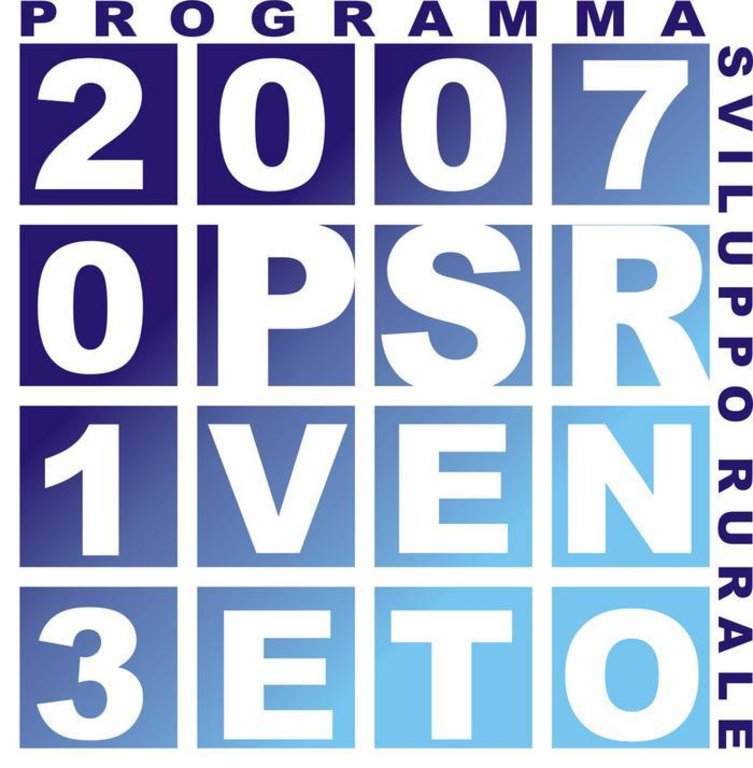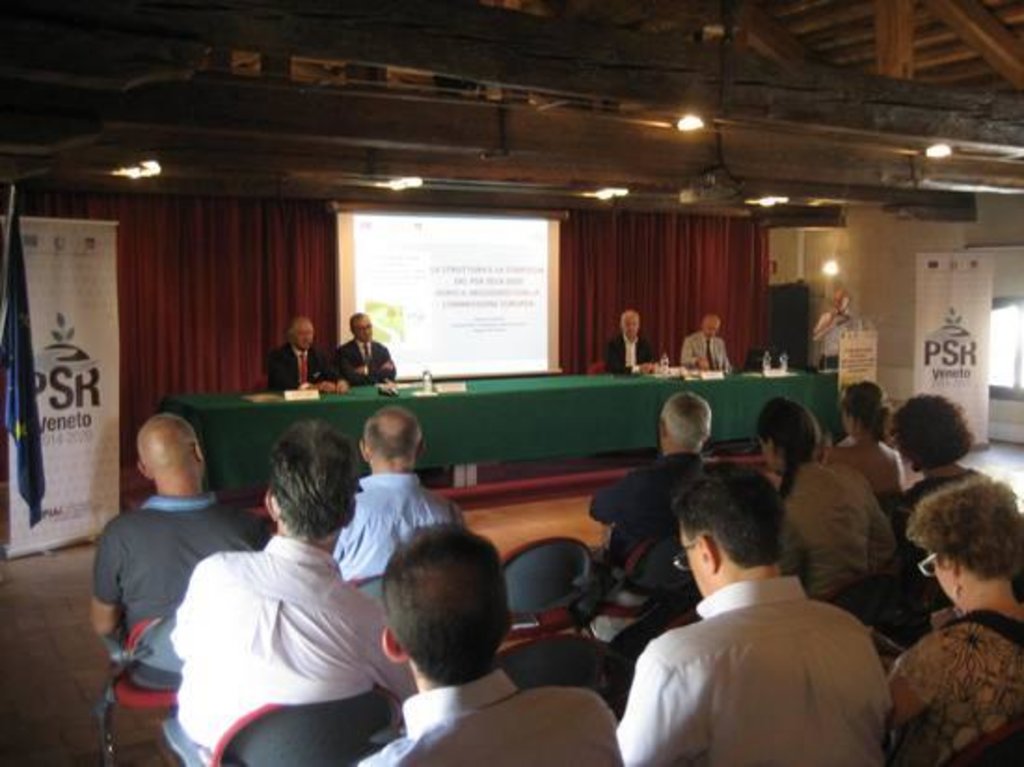Rural development programme in the Veneto region [意大利]
- 创建:
- 更新:
- 编制者: Nicola Dal Ferro
- 编辑者: –
- 审查者: Fabian Ottiger
Programma di sviluppo rurale in Veneto
approaches_2598 - 意大利
查看章节
全部展开 全部收起1. 一般信息
1.2 参与方法评估和文件编制的资源人员和机构的联系方式
SLM专业人员:
Morari Francesco
DAFNAE - University of Padova
意大利
有助于对方法进行记录/评估的项目名称(如相关)
Preventing and Remediating degradation of soils in Europe through Land Care (EU-RECARE )有助于对方法进行记录/评估的机构名称(如相关)
University of Padova (UNIPD) - 意大利有助于对方法进行记录/评估的机构名称(如相关)
Programma Sviluppo Rurale 2003-2017 - 意大利1.3 关于使用通过WOCAT记录的数据的条件
(现场)数据是什么时候汇编的?:
22/04/2015
编制者和关键资源人员接受有关使用通过WOCAT记录数据的条件。:
是
1.4 SLM技术问卷的参考
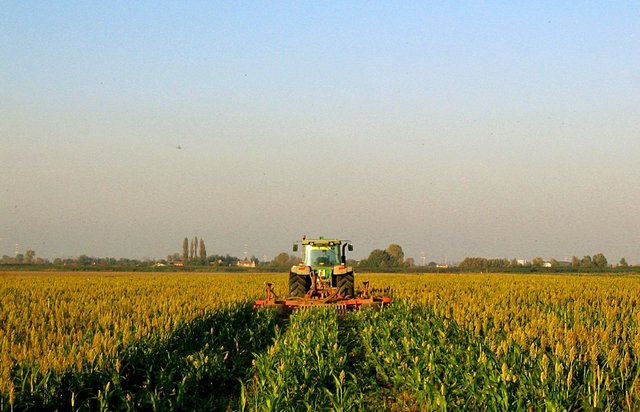
Continuous soil cover on croplands [意大利]
Maintenance of continuous soil cover; alternating crops and cover crops as a practice to improve soil quality and reduce diffuse agricultural water pollution
- 编制者: Nicola Dal Ferro

Agroforestry system [意大利]
Silvo-arable systems for production of annual crops on tree plots
- 编制者: Nicola Dal Ferro
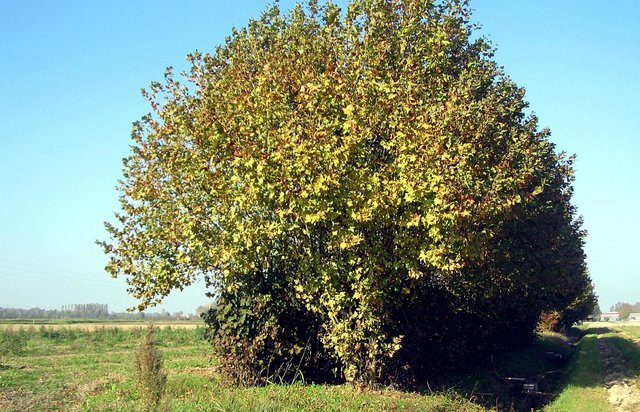
Vegetated buffer strips [意大利]
Buffer vegetation of agricultural land bordering to prevent nonpoint surface water pollution and soil erosion
- 编制者: Nicola Dal Ferro
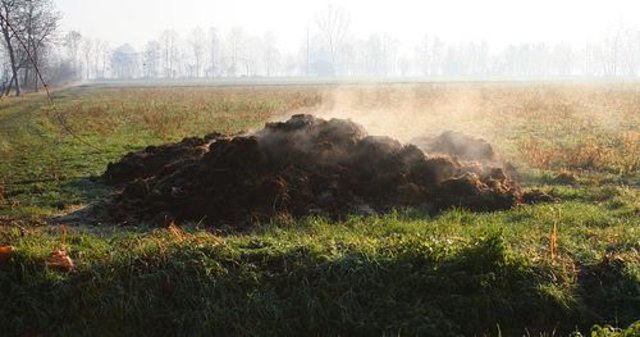
Re-introduction of organic amendments in croplands [意大利]
Re-introduction of biosolids to improve fertility of mineral soils
- 编制者: Nicola Dal Ferro
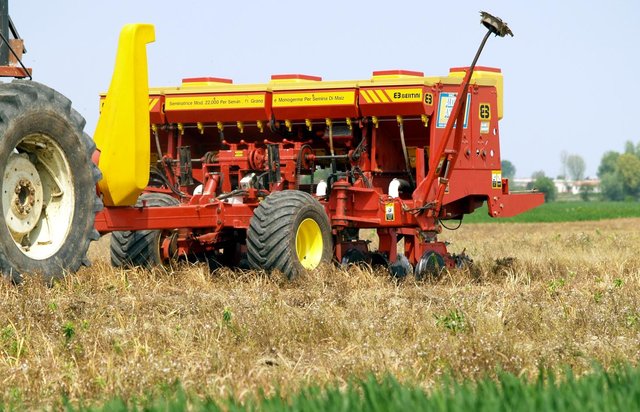
Conservation agriculture [意大利]
Sustainable crop production and residue management under no-tillage to improve soil fertility and increase environmental benefits
- 编制者: Nicola Dal Ferro
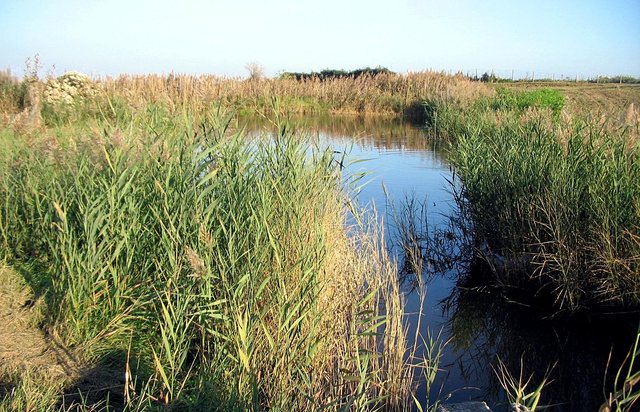
Wetland system [意大利]
Vegetated water basins for the control of diffuse pollution
- 编制者: Nicola Dal Ferro
2. SLM方法的描述
2.1 该方法的简要说明
Developing rural areas in the Veneto region through sustainable land management policies
2.2 该方法的详细说明
该方法的详细说明:
Aims / objectives: The objective of the Rural Development Programme (RDP) is to improve the farmers' activity by addressing economic, environmental and social challlenges. In this context, the RDP aims to grow the rural economy as well as improve the agro-environment. This is achieved by economically supporting: a) the multifunctionality of agriculture (e.g. crop production, natural environment, tourism etc.); b) the renovation of agriculture sector towards more efficient and competitive productive systems; c) the communities living and working in rural areas.
Methods: The Rural Development Programme is carried out through subsidies to farming practices following a cross-compliance principle. As a result, a combination of 'baseline' conservation measures with the RDP ones must be applied to achieve subsidised conservation measures.
Role of stakeholders: The level of subsidies is estimated on input or maintenance costs. Moreover, the yield loss is also taken into account due to implementation of some measures. These estimates were obtained through consultation among stakeholders, including farmer organisations, public enterprises and governments.
Other important information: The Rural Development Programme (RDP) in the years 2007-2013 was structured in four axes, corresponding to four lines of action: a) Improvement of competitiveness of the agricultural and forestry sector; b) Improvement of environment and rural areas; c) Improvement of quality of life and economic diversification in rural areas; d) Implementation of strategies for the local development.
2.3 该方法的照片
2.5 采用该方法的国家/地区/地点
国家:
意大利
区域/州/省:
Italy
有关地点的进一步说明:
Veneto region
2.6 该方法的开始和终止日期
注明开始年份:
2007
终止年份(若不再采用该方法):
2013
2.7 方法的类型
- 基于项目/方案
2.8 该方法的主要目的/目标
The Approach focused mainly on SLM with other activities (fostering the competitiveness of agriculture; knowledge transfer; economic development in rural areas)
Rural development Programme (RDP) aims to improve both the socio-economic situation of rural areas as well as the agro-environmental quality. Main line of actions involve: a) increase of competitiveness of the agricultural and forestry sector; b) increase of environmental quality in rural areas; c) economic diversification of rural areas to promote a better quality of life.
The SLM Approach addressed the following problems: In the last decades, the over-simplification of agro-ecosystems due to intensive monoculture and high mechanisation led to reduced biodiversity, increased land degradation and water pollution and finally vulnerability of agroecosystems. A general low farm size and fluctuating commodity prices led to a reduction of incomes and inadequate generational turnover. These factors drove small farmers out of the market, especially in marginal areas, where the phenomenon has been associated to land abandonment (especially in hilly and mountainous areas).
2.9 推动或妨碍实施本办法所适用的技术的条件
社会/文化/宗教规范和价值观
- 阻碍
Land users are seldom tied to traditional systems and new technologies are difficulty adopted.
Treatment through the SLM Approach:
财务资源和服务的可用性/可得性
- 阻碍
Fundings are sometimes very few for implementation of technologies
Treatment through the SLM Approach:
机构设置
- 阻碍
Treatment through the SLM Approach:
法律框架(土地使用权、土地和水使用权)
- 启动
The existing land ownership, land use rights / water rights moderately helped the approach implementation: The RDP is seen as an opportunity for the development of the rural areas and the adoption of SLM measures is fostered
- 阻碍
Treatment through the SLM Approach:
了解SLM,获得技术支持
- 阻碍
Lack of expertise and technical skills for technology implementation
Treatment through the SLM Approach:
工作量、人力资源可用性
- 阻碍
Treatment through the SLM Approach:
3. 相关利益相关者的参与和角色
3.1 该方法涉及的利益相关者及其职责
- 当地土地使用者/当地社区
Difference between men and women because employees in the agriculture sector are traditionally men
- SLM专家/农业顾问
- 地方政府
- 国家政府(规划者、决策者)
- 国际组织
如果涉及多个利益相关者,请注明领导机构:
The RDP is adopted by regional government, but also following the requests and the needs of land users.
3.2 当地土地使用者/当地社区参与该方法的不同阶段
| 当地土地使用者/当地社区的参与 | 指定参与人员并描述活动 | |
|---|---|---|
| 启动/动机 | 互动 | |
| 计划 | 外部支持 | |
| 实施 | 被动 | |
| 监测/评估 | 无 | |
| Research | 互动 |
3.4 有关SLM技术选择的决策
具体说明谁有权决定选择要实施的技术:
- 政治家和领袖
解释:
Decisions on the method of implementing the SLM Technology were made by mainly by SLM specialists with consultation of land users
4. 技术支持、能力建设和知识管理
4.1 能力建设/培训
是否为土地使用者/其他利益相关者提供培训?:
是
明确受训人员:
- 土地使用者
- 现场工作人员/顾问
培训形式:
- 农民对农民
- 示范区域
- 公开会议
- 课程
涵盖的主题:
Mainly training on technical implementation of the technology, access to finance and project planning.
4.2 咨询服务
土地使用者有权使用咨询服务吗?:
是
指明是否提供了咨询服务:
- 在固定中心
说明/注释:
Name of method used for advisory service: Authorised advisory services, public and private; Key elements: Objectives, Project design, Administrative support
Advisory service is quite adequate to ensure the continuation of land conservation activities
4.3 机构强化(组织发展)
是否通过这种方法建立或加强了机构?:
- 是,适度
具体说明机构的强化或建立程度:
- 本地
4.4 监测和评估
监测和评估是该方法的一部分吗?:
是
注释:
bio-physical aspects were monitored by government through observations
bio-physical aspects were monitored by government through measurements
management of Approach aspects were monitored by government through observations
There were few changes in the Approach as a result of monitoring and evaluation: Ameliorations in the calls to fit requirements and possible applications. (e.g. more adequate finacial compensations; administrative simplifications, etc.)
There were no changes in the Technology as a result of monitoring and evaluation
4.5 研究
研究是该方法的一部分吗?
是
明确话题:
- 经济/市场营销
- 生态学
5. 融资和外部物质支持
5.1 该方法中SLM组成部分的年度预算
如果不知道准确的年度预算,请给出一个范围:
- > 1,000,000
注释(例如主要的资助来源/主要捐助者):
Approach costs were met by the following donors: local government (district, county, municipality, village etc): 100.0%
5.2 为土地使用者提供财政/物质支援
土地使用者是否获得实施该技术的财政/物质支持?:
是
5.3 对特定投入的补贴(包括劳动力)
- 设备
| 具体说明哪些投入得到了补贴 | 程度如何 | 对补贴做出具体说明 |
|---|---|---|
| 机械 | 部分融资 | |
| 工具 | 部分融资 | |
- 农业
| 具体说明哪些投入得到了补贴 | 程度如何 | 对补贴做出具体说明 |
|---|---|---|
| 种子 | 部分融资 | |
| 化肥 | 部分融资 | |
- 建筑
| 具体说明哪些投入得到了补贴 | 程度如何 | 对补贴做出具体说明 |
|---|---|---|
| 石料 | 部分融资 | |
| 木材 | 部分融资 | |
- 基建
| 具体说明哪些投入得到了补贴 | 程度如何 | 对补贴做出具体说明 |
|---|---|---|
| 道路 | 部分融资 | |
| 学校 | 部分融资 | |
5.4 信用
是否根据SLM活动的方法给予信用值?:
是
6. 影响分析和结论性陈述
6.1 方法的影响
该方法是否帮助土地使用者实施和维护SLM技术?:
- 否
- 是,很少
- 是,中等
- 是,支持力度很大
The RPD aims at improving SLM practices in the Veneto region with an economic support. Biodiversity, environmental and water quality, soil protection are key elements of RDP to support SLM practices.
该方法是否有助于社会和经济弱势群体?:
- 否
- 是,很少
- 是,中等
- 是,支持力度很大
Did other land users / projects adopt the Approach?
- 否
- 是,很少
- 是,中等
- 是,支持力度很大
Whole around Italy and Europe the RDP was used as a tool for improving the environment and the quality of life in rural areas.
Did the Approach lead to improved livelihoods / human well-being?
- 否
- 是,很少
- 是,中等
- 是,支持力度很大
Economic support to farmers and land users for imrpoving the environmental quality led to improved human well-being for all the community.
Did the Approach help to alleviate poverty?
- 否
- 是,很少
- 是,中等
- 是,支持力度很大
6.2 土地使用者实施SLM的主要动机
- 增加利润(能力),提高成本效益比
- 支付/补贴
6.3 方法活动的可持续性
土地使用者能否维持通过该方法实施的措施(无外部支持的情况下)?:
- 不确定
若否或不确定,请具体说明并予以注释:
Some technologies are adopted only on the basis of contributions that are provided. In the long-term, the technology could be abandoned if not funded anymore. As a result, some technologies are not economically sustainable.
6.4 该方法的长处/优点
| 编制者或其他关键资源人员认为的长处/优势/机会 |
|---|
| The approach has a holistic view for the environment and human-well being improvement by including and integrating several SLM practices. (How to sustain/ enhance this strength: Include more SLM measures ) |
6.5 该方法的弱点/缺点以及克服它们的方法
| 土地使用者认为的弱点/缺点/风险 | 如何克服它们? |
|---|---|
|
Implementation of SLM due to the approach is time-consuming due to excessive bureaucracy |
Administrative simplification |
| 编制者或其他关键资源人员认为的弱点/缺点/风险 | 如何克服它们? |
|---|---|
| The adoption of some measures thanks to the approach is usually limited to the time in which there are subsidies, without | Maintain the subsidies and the approach for the longest possible time |
7. 参考和链接
7.1 方法/信息来源
- 实地考察、实地调查
- 与土地使用者的访谈
7.2 参考可用出版物
标题、作者、年份、ISBN:
Programma di sviluppo rurale per il veneto 2007-2013, Regione Veneto, 2007. Dipartimento Agricoltura e Sviluppo Rurale.
链接和模块
全部展开 全部收起链接

Continuous soil cover on croplands [意大利]
Maintenance of continuous soil cover; alternating crops and cover crops as a practice to improve soil quality and reduce diffuse agricultural water pollution
- 编制者: Nicola Dal Ferro

Agroforestry system [意大利]
Silvo-arable systems for production of annual crops on tree plots
- 编制者: Nicola Dal Ferro

Vegetated buffer strips [意大利]
Buffer vegetation of agricultural land bordering to prevent nonpoint surface water pollution and soil erosion
- 编制者: Nicola Dal Ferro

Re-introduction of organic amendments in croplands [意大利]
Re-introduction of biosolids to improve fertility of mineral soils
- 编制者: Nicola Dal Ferro

Conservation agriculture [意大利]
Sustainable crop production and residue management under no-tillage to improve soil fertility and increase environmental benefits
- 编制者: Nicola Dal Ferro

Wetland system [意大利]
Vegetated water basins for the control of diffuse pollution
- 编制者: Nicola Dal Ferro
模块
无模块


